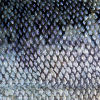Tapheselachophobia
Tapheselachophobia, or the irrational fear of being buried alive with a shark, is one of the more common phobias diagnosed. The fear has to be so intense as to interrupt daily functioning to be considered a disease. Perplexing psychologists for years, this phobia is nearly untreatable.
Theoretical Approach
Unlike Contreltotapheselachophobia, or the fear of being sexually molested by a shark while being buried alive with it, Tapheselachophobia is much more mysterious. Several theories have arisen as to why this particular nexus of archetypes have coincided so often in the clinical literature.
After having treated several patients with Deipnoselachophobia, the fear of having dinner conversations with a shark, Sigmund Freud concluded that most people with social phobia gravitated away from emotionless water-bound killing machines.
Freud showed that people afraid of sharks also had a strange fear of being buried alive. When Freud ran experiments on some chosen subjects of a shark-being-buried-alive nature, he found that the subjects showed a very high level of trepidation.
In the 1950's, behaviorist John Watson conducted Tapheselachophobia experiments on several young monkeys that he "obtained" "illegally" "from the petting zoo". Here is an excerpt from Mr. Watson's scientific journal:
| “ | The first monkey, named Monkey One by my assistants, was very frightened of Mr. Bonzo and of the grave he was descending into. From a small video monitor in my lab, we could not only see Monkey One's last moments, but also the terror in his face. The second monkey, who died just as horribly as the first, was killed by Mr. Bonzo, Jr. in a grave surrounded by darkness and his own screams. We then decided to try and condition the third monkey to feel confident around sharks. During his very first swim, "Monkey Three" was gruesomely murdered. We figured, since we had already spent five grand on the shark, to bury it alive. Luckily for us, Monkey Three was still alive inside Mr. Bonzo, III, and through the muffled screams we- | ” |
Uh, let's skip ahead...
| “ | After wiping out all sharks within the Lake Michigan area, except for Ol' Chompy, the two ton monster that may or may not exist, we have decided that monkeys are too weak to withstand the experiments. In fact, I asked my assistants why we even started doing this experiment. The response "because it's there" being good enough for me, we moved on to burying other animals with sharks we "obtained". We experimented with a wide range of living and non-living animals such as skunks, skinks, road runners, foxes, people, groundhogs, people, giraffes, squids, child-people, Negroes, eagles, cactuses, other sharks, cardboard boxes, rainbows, and even a bible. We've decided that very few subjects- excluding the rainbow- could convince sharks to forgo eating them. All these subjects showed extreme fear before, during, and, in the case of the rainbow, after the experiment concluded. | ” |
Mr. Watson's behavioral studies culminated in a simple forty step system designed to help sufferers of Tapheselachophobia and Taphephasmoavioselachohadephobia (being buried alive with flying ghost sharks from fucking Hell). The key to understanding how to treat the disease was knowing why it was scary in the first place.
Being in a dark place with a wild animal with no chance of escape
After interviewing a few subjects suffering from Tapheselachomania, or people obsessed with burying other people alive with sharks (not to be confused with Taphephasmoavioselachohademania), we can see why someone might be afraid of this practice, if they are not armed with the right knowledge. Through the centuries, and millennia, man has had a primal fear of being in a dark place with a wild animal with no chance of escape. Prehistoric cavemen have, since the dawn of time... cave paintings, since the dawn of time... very scared... famine of 1812, since the dawn of time... Michael Phelps.
Being eaten alive in a dark place
Dark places are known to hide things that can eat you, and even though no scientific studies have been done,... since the dawn of man... darkness surrounding me... WHAT WAS THAT??... Michael Phelps.
Being buried alive in a dark place
Whereas being buried alive in a bright, spacious room can actually bring feelings of relief, being buried alive in a tiny little box produces the opposite effect... since the dawn of time... eh, Michael Phelps.
Treatment Plan

Behaviorism deals with phobias using a method known as "gradual desensitization". This method is also used for rarer phobias such as Agoraphobia (fear of open spaces), Arachnophobia (fear of spiders), and Extreme Japanophobia (Fear of Japanese culture). Watson and B. F. Skinner suggest the following steps to specifically curing Tapheselachophobia.
- Calm the subject down by asking them to find a calm space they can go to mentally. Be sure that their mental space does not include sharks or any animals that could be misconstrued as sharks, such as Olympic Swimmer Michael Phelps.
- While they are in their mental space, ask them to visualize being buried alive with a shark. When they open their eyes in shock, be sure your shark mask is centered squarely on your face.
- Calm the subject down again by laughing at their fears and telling them to go back to their calm space. Again, make sure their mental image has no graves or gravesites. Tell them graves are what they are afraid of and not to visualize them.
- Ask the subject what they think of sharks. Tell them that the sharks won't get them, according to your sources. Make sure there are no sharks nearby, and if there are, ask them to leave. If you ARE a shark, please be aware of your conflict of interest.
- Drug the subject and haul them to the graveyard, shark in tow (unless you are a shark). Throw the subject and the shark in a box. Leave the subject in the box until they are no longer afraid, or until the shark is, whichever comes first.
Although treatment for Tapheselachophobia is very difficult to perform, it is ALSO never useful at all. Current research shows that 100% of Americans (and Nigerians, for some reason) are afraid of being buried alive with a shark. The Discovery Channel is working hard to expose people to as much shark footage as possible to help ease this terrible affliction into national awareness.
There are, as of now, no articles about Tapheselachophobia on any wiki worth reading.






